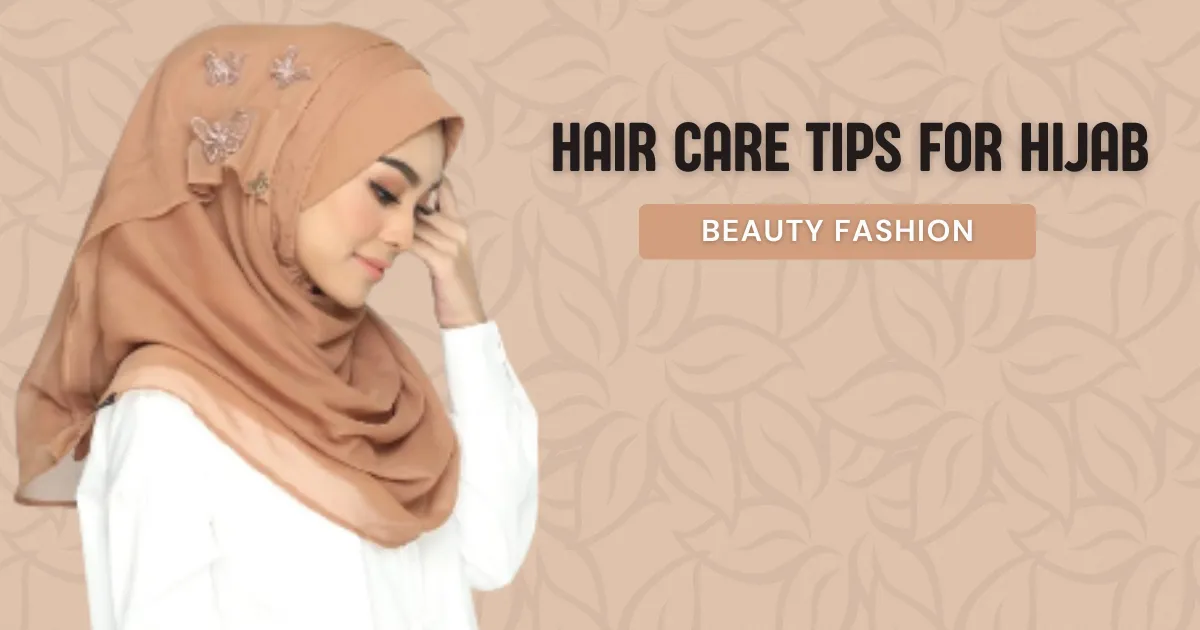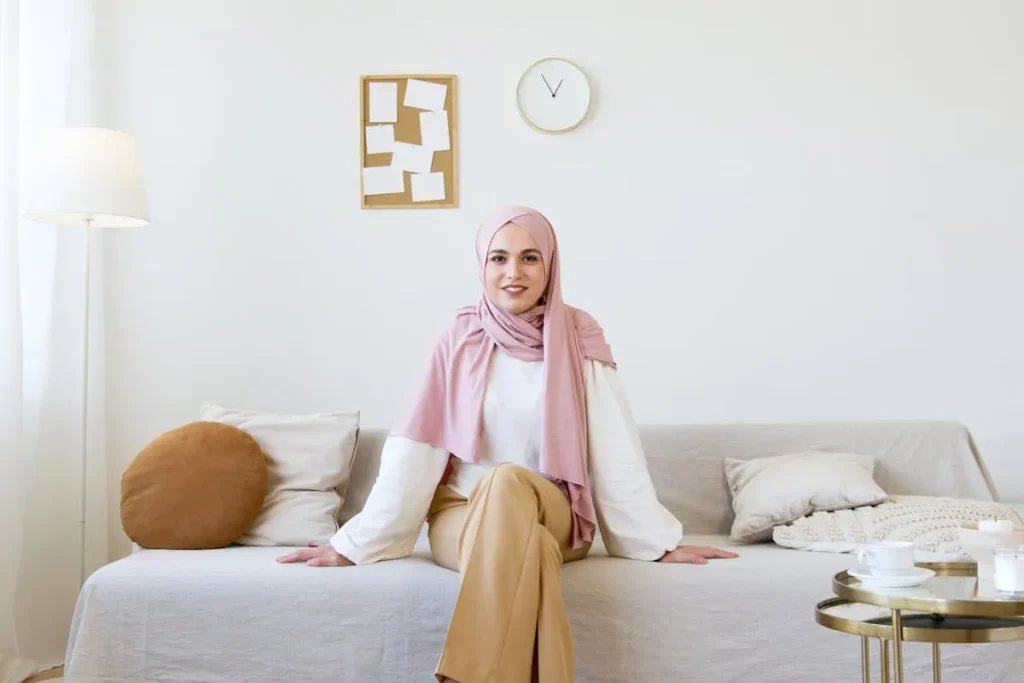
A Comprehensive Guide
The hijab is our crown. It is a symbol of modesty and of our beautiful faith. It is a sign of our obedience to our merciful creator. Covering our hair and dressing modestly is all part of pleasing our creator. However, just because others cannot see our hair does not mean that we should stop taking care of it.
We have been given these bodies as an Amana to take care of. In this post, I will be sharing my top hair care tips for Hijabs to avoid hair loss, thinning or damage and how to maintain luscious and healthy hair.
Table of Contents
- Choosing The Right Hijab Material
- Impact on Hair Health
- 6 Important Hair Care Tips for Hijab
- Conclusion
- FAQ
Choosing The Right Hijab Material
Breathable Fabrics
The fabric of your hijab can significantly impact your hair health. Opt for breathable materials like cotton or bamboo, which allow air circulation and reduce sweat buildup. Avoid synthetic fabrics that can trap moisture and heat, leading to scalp issues.
Impact on Hair Health
Choosing the right fabric helps prevent dryness and breakage. Breathable materials minimize friction, reducing the risk of hair damage. Additionally, they help maintain the natural moisture balance of your hair and scalp.
6 Important Hair Care Tips for Hijab
- 1, Ditch the Volume: Not only is the exaggerated ‘Camel hump’ volume away from the correct interpretation of the Hijab, those large flower clips or high buns can really damage the hair. Having the hair up in a tight bun or with a tight-gripping clip should be avoided. The tension creates unnecessary stress. This results in damage to the hairline and can cause hair breakage. Instead, opt for a looser bun and tie it using a no-snag hair tie.
- 2. Always DRY your hair: Make sure that your hair is FULLY dry before putting on your hijab. The worst thing you can do for your hair is to tie it up whilst wet and then wear a hijab over it. This can really weaken the hair strands and make the environment damp and unbreathable, which can lead to dandruff. So take out the extra time to completely dry your hair.
- 3. Oil those Locks: As mentioned, keeping our hair 90% of the time wrapped up under fabric, can seriously dehydrate our scalp. The lack of oxygen causes the scalp to become dry, creating dandruff or itchiness. To counter this, simply give your head and locks a warm oil massage once a week. Add it to your weekly physical ‘self-care’ routine.
- 4. Forget the Under-Scarf: If, like me, you were addicted to wearing the tight under scarf / inner hijab caps, then unfortunately, it is time for those to go! I used to wear ones made from some sort of Lycra or jersey fabric. They would be like a tube that would cling to my hair. Years and years of that really damaged my hair, and so, it was time for them to go! I changed my hijab style and hijab fabrics (as mentioned in tip #3) to ones that would not require any inner scarf. From this change alone, I saw a massive difference! Now, if I ever wear those caps, they give me intense headaches. They do, however, make great reusable home cleaning cloths! So a win-win for the Eco-Friendly Muslim!
- 5. Vitamin D: I cannot stress this one enough. It has been found in many studies that Vitamin D is lower in hijab-wearers
- As Muslim women, rarely do we sit with our heads uncovered under the sun. If you are fortunate to have a sunroom or a private garden, then catching some sunlight is extremely important, as the best-known benefit of sunlight is the ability to boost the body’s vitamin D supply. Take some time out to let down your hair under the sun and absorb its energy. Vitamin D is crucial and has many benefits, such as improving the immune system.
- 6. Hair Treatment: Giving yourself a monthly hair treatment may improve the texture and quality of your hair. We already discussed oiling once a week, so this would be a treatment that you would do once a month.
- I love to use hair masks, and my absolute favourite is the Garnier Fructis Damage Repairing Mask. After testing a countless number of hair masks, this one beats them all! It consists of many natural ingredients such as papaya and coconut oil, and is paraben-free and vegan. You only need to leave it on for a minute (I leave it a little longer), rinse it off, and voila! Instantly stronger and shinier hair. Try it out, you won’t regret it. Plus, the price is unbeatable!
Conclusion
Taking care of your hair while wearing a hijab involves a combination of proper hair care practices, the right products, and a healthy lifestyle. By following these tips, you can maintain beautiful, healthy hair that complements your hijab. Remember, consistency is key, and with time, you will see positive results.
1. 4 Muslim Women Share Their Hair-Care Routines While
FAQ
Ques-1: How often should I wash my hair if I wear a hijab?
Ans: It’s recommended to wash your hair 2-3 times a week, depending on your hair type and lifestyle. Overwashing can strip natural oils, leading to dryness.
Ques-2: Can wearing a hijab cause hair loss?
Ans: Wearing a hijab itself doesn’t cause hair loss, but tight styles and improper care can lead to traction alopecia. Opt for loose styles and proper hair care routines to prevent this.
Ques-3: What fabrics are best for hijabs to maintain hair health?
Ans: Breathable fabrics like cotton and bamboo are best as they allow air circulation and reduce sweat buildup, keeping your scalp healthy.
Was this article helpful?
Stay updated with the latest posts on HealthToLife—expert health tips, wellness trends, and life-changing advice you don’t want to miss. Click to explore.



